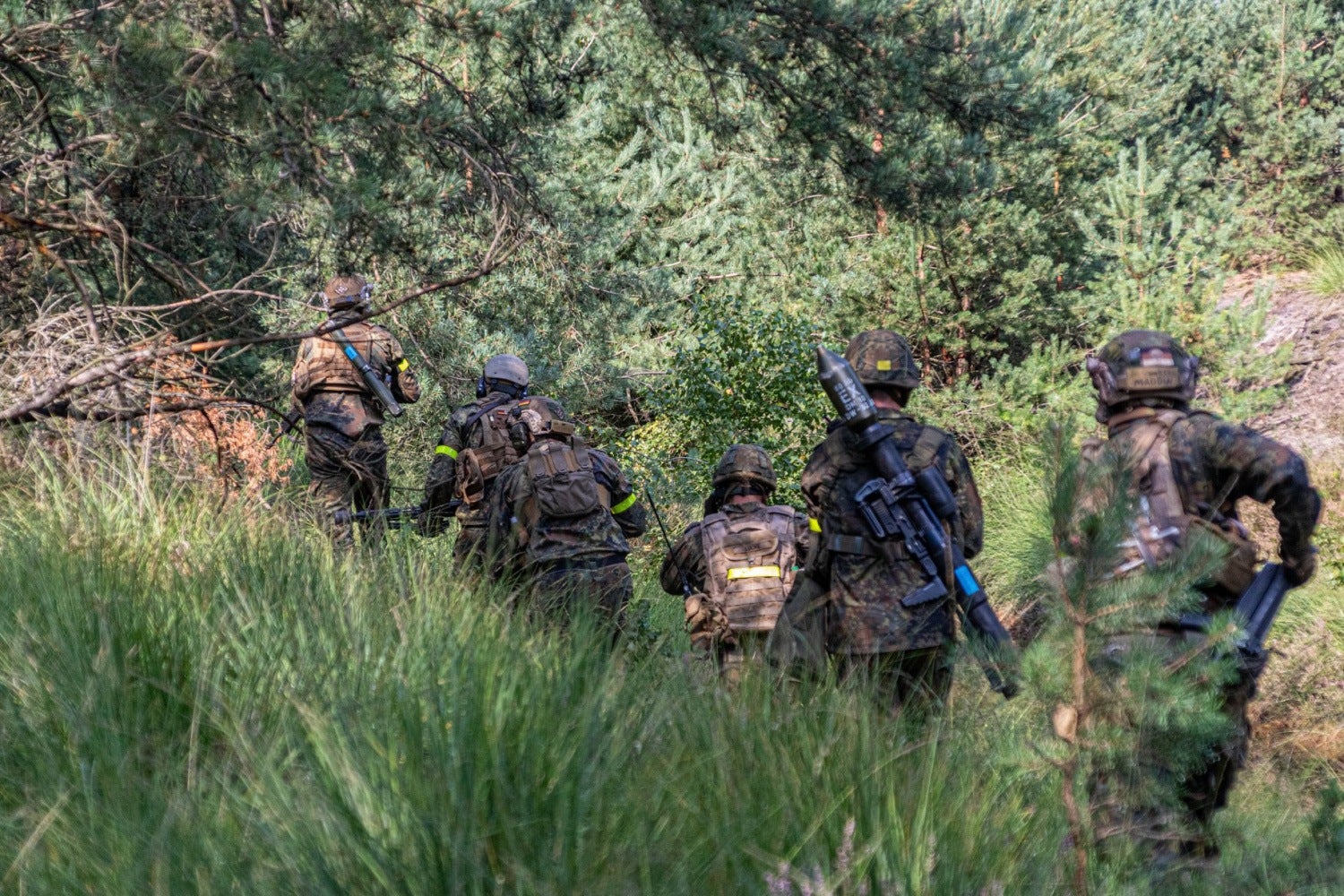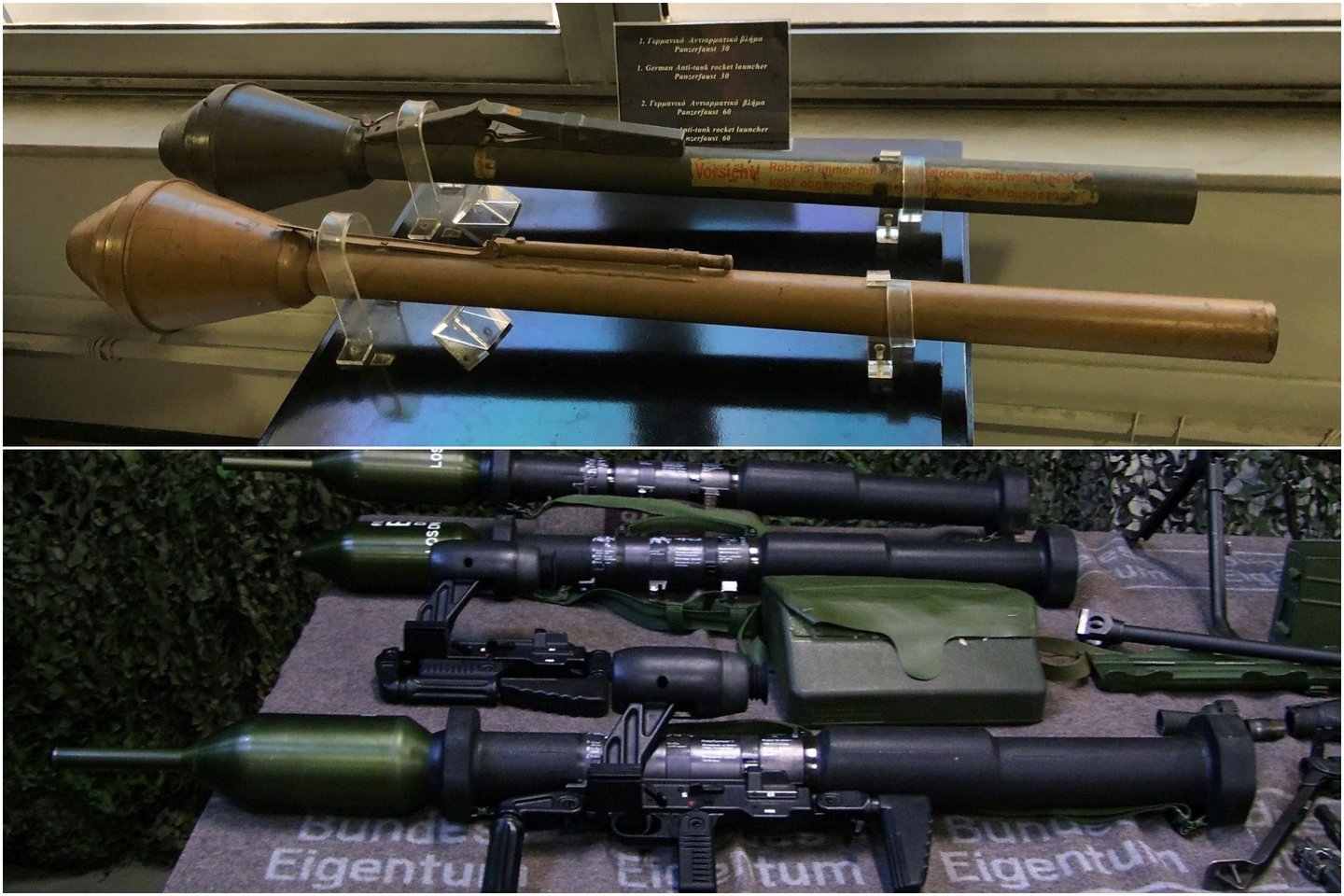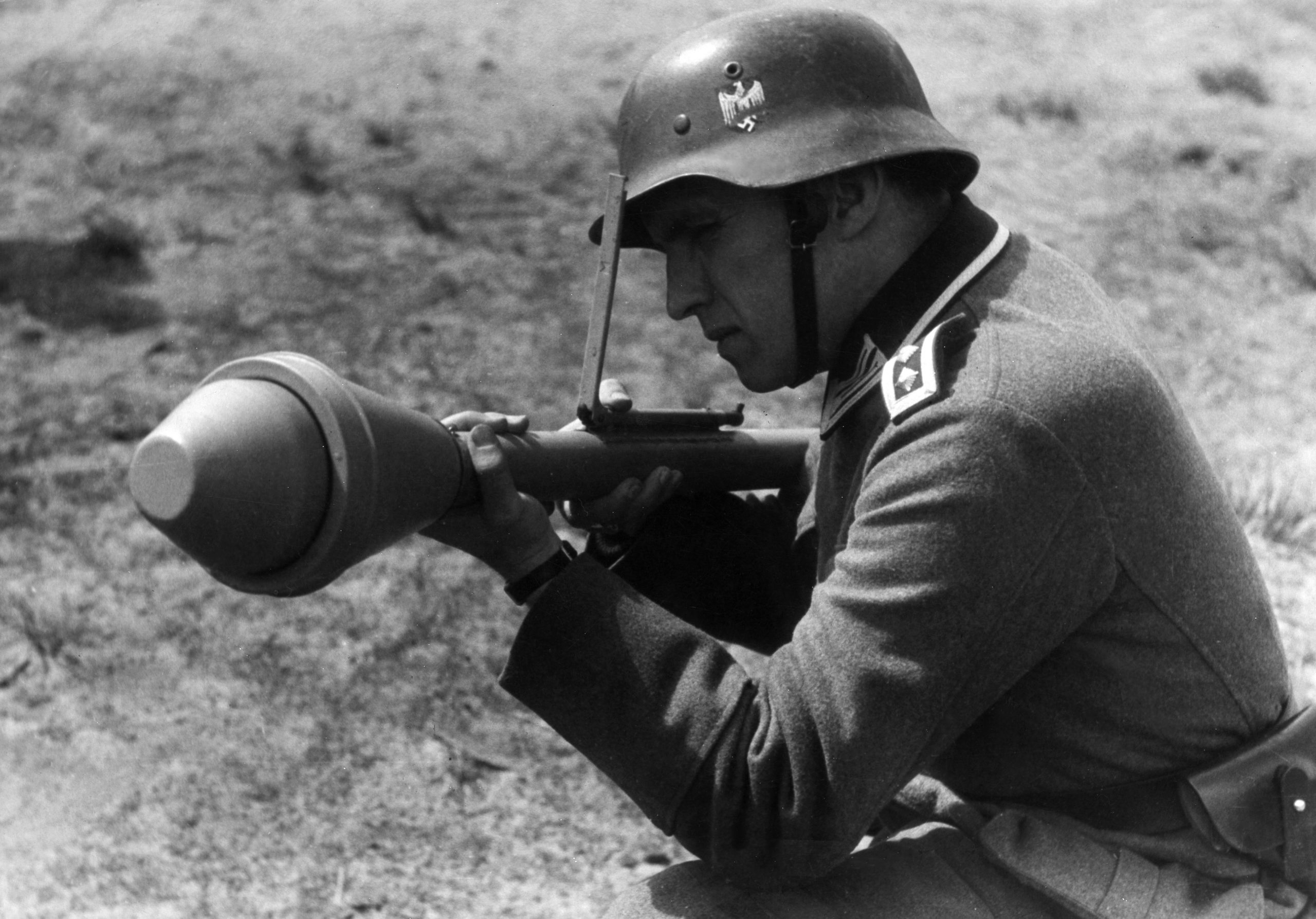German Panzerfaust 3 - The Panzerfaust 3 (Pzf 3) is a man-portable, single-use, impenetrable anti-tank weapon manufactured by the German arms company Dynamite Nobel Defense and a subsidiary of Israel's Rafael Advanced Defense Systems.
It is a shoulder-launched anti-tank weapon designed to destroy a wide range of targets on the battlefield, including vehicles such as modern battle tanks, infantry fighting vehicles and armored fighting vehicles, as well as structures such as bunkers, fortifications , buildings and other military equipment. the infrastructure.
German Panzerfaust 3

Development of the PZF-3 anti-tank weapon began in 1978 to replace its predecessor, the Panzerfaust 2, which could not penetrate the armor of the Soviet T-72 and T-80 main battle tanks.
Saint Panzerfaust 3
The Pzf 3 entered service with the German Armed Forces (Bundeswehr) in 1987, after completion of development in 1985. It is currently in service with several countries including Germany, Japan, Holland, Switzerland, Belgium, Peru, Italy, South Korea. , Iraq and Ukraine.
In February 2022, the Netherlands announced the delivery of 50 Pzf-3 anti-tank weapons to Ukraine. The package also includes 400 rocket-propelled grenades and 200 anti-aircraft Stinger missiles.
The PZF 3 anti-tank weapon has a length of 1200 mm and a weight of 13 kg. It is an unguided mobile launcher of anti-tank missiles and rocket systems, which is primarily used against armored targets. It is used with different types of bullets for the necessary operations on different types of targets and can be fired from vehicles and closed rooms.
The weapon system consists of two main parts: a 110 mm warhead preloaded in a disposable canister, and a reusable fire control and sight unit.
Germany Must Overcome Its Reluctance To Send Heavy Armor To Ukraine
The work is attached to the fire control and sighting unit before firing. Several types of projectiles are available for the weapon, which differ from the types of warheads.
The weapon uses the Davis Cannon principle to destroy the repulsive force generated during launch, allowing it to be fired from a limited volumetric space using a supercaliber projectile attached to the front of the launch tube.
A countermass equal to the weight of the projectile is ejected from the rear end of the tube to reduce recoil.

Designers reduced the muzzle velocity of the projectile to 165 m/s to reduce the weight of the weapon, as well as the flash, smoke and sound generated during the shot. The missile booster engages when the projectile is at a safe distance from the operator and further accelerates the projectile.
Wegen Des Kriegs In Der Ukraine: Panzerfaustmunition Bei Bundeswehr Knapp
The weapon enables firing a 110 mm projectile from a 60 mm launcher. An expandable probe in the warhead allows for enhanced armor penetration.
The weapon functions as a bazooka when loaded with shaped charge ammunition to penetrate an armored target up to 700mm thick.
The bunker fist (bunkerfaust) configuration of the weapon is equipped with other ammunition for firing at targets behind cover and in bunkers. It can penetrate reinforced concrete up to 240mm.
The weapon can be operated by one soldier to engage a moving target at a maximum range of 300 m and a stationary target at a range of up to 400 m.
Shoulder Launched Missiles Could Make Ukraine War Nightmare For All Sides
The Pzf 3 projectile was originally equipped with a high-explosive anti-tank HEAT warhead designed to penetrate approximately 40 cm of armor.
Dynamite Nobel Defense developed the Pzf 3-T variant, which has a tandem warhead capable of destroying jet armor and penetrating about 70 cm of steel armor.
The Pzf 3-Improved Tandem (IT), an improved version of the handheld anti-tank weapon, features a front-loading retractable nose bar. It was developed with an improved dual-mode (thermal and high-explosive squash warhead (HESH)) tandem warhead to defeat jet armor.

The weapon cartridges were also upgraded from the original DM12 with a shaped charge warhead to the DM22 with a double charge warhead and High Explosive Anti-Tank Enhanced Tandem Missile Assist (HEAT-IT-RA) DM72 with enhanced . Performance: The DM72A1 was later introduced for the Pzf 3-IT, the most modern version of the bazooka.
Sankt Panzerfaust Patch
The Pzf 3-IT DM72A1 round can penetrate armor steel when fired in HEAT mode and works as a nose round in HESH mode.
The Bunker Punch projectile uses a tracking fragmentation warhead. Ammunition types for the Pzf 3 also include versatile fragmentation, illumination, smoke, and infrared (IR) smoke.
The fire control unit has a mechanical trigger and a manual safety. The reusable firing device can be equipped with an optical sight and be equipped with visual equipment.
Dynarange, the latest version of the fire control unit, enables operators to engage targets up to 600m away.
In Ukraine, The German Panzerfaust 3 Is Making Junk Of Russian Tanks
The 3-T600 has a Simrad IS2000 laser sight for moving targets at a range of 600m. It can also be fitted with Simrad KN205F night sights for night combat capabilities.
The weapon comes in the standard anti-tank version of the Pzf 3, the Pzf 3 Bunkerfaust, and advanced versions such as the Pzf 3-T600, Pzf 3-T, Pzf 3-T600, Pzf 3-IT600, Pzf 3-LTW and Pzf 3LR.
The Pzf3-LTW system weighs less than 10 kg. The Pzf 3LR, a long-range semi-active laser homing system (SALH), has a range of 800m and an armor penetration capability of 700mm.

Dynamit Nobel Defense has been awarded a contract by German defense procurement agency BAAINBw to supply 3,000 missiles for the German armed forces' Pzf 3-IT anti-tank weapon system in February 2021.
Anti Tank Rocket Launcher Panzerfaust 3 3d Model
The company received another contract in July 2022 to supply 3,500 DM72A1 cartridges for the Pzf 3-IT system of the German armed forces. A German soldier holds a Panzerfaust 3 in Lower Saxony in 2016. (Photo by Sebastian Golnow/Image via Getty Images)
Although the Russian army once succeeded as the second best military in the modern world, the vastly underrated Ukrainian military has shown this time and time again, seemingly only with national plaques and a barrage of weapons donated by sympathetic Western countries.
Among the borrowed Ukrainian arsenal, the Panzerfaust 3 had an impressive showing against Russian armored columns. What is a shoulder-fired anti-tank missile, where did it come from and why does it cause fear among Vladimir Putin's soldiers?
In 1943, as a resurgent Soviet army advanced into the Third Reich, behind a phalanx of first-class tanks produced in numbers Germany could not hope to match, Germany developed a small, simple, easy-to-use anti-tank weapon that could turn any: Wilder: Tank in the killer. called Panzerfaust
Panzerfaust: An Armor Fist To Knock Out Allied Armor
("armor fist"), it was essentially a tube that fired a rocket-propelled grenade with a shaped charge that could penetrate armor up to 200 feet away. The launch tube could be reloaded if additional warheads were present, but cheaply removed if not.
Distributed among the soldiers and from 18 October 1944 the elders and children of the Volkssturm ("Volkssturm", Germany's last national militia) hastily trained, the Panzerfaust took extraordinary courage to work on its effectiveness and was not reliable enough to save the empire. his final demise next year on May 8th (or May 9th, depending on who you ask).
However, it was effective enough for post-war armies on both sides of the Iron Curtain to improve upon its basic design. This includes the current German Bundeswehr (Federal Armed Forces) in Panzerfaust 3 form. After going to war with the Bundeswehr in Afghanistan, a new generation of Panzerfausts is once again fighting against Russian tanks... only men with anti-tank weapons. they are Ukrainian.

In response to a 1973 order for a more powerful, accurate semi-deployed weapon to replace the aging WWII PzF-44, capable of engaging the latest generation of Russian T-72 and T-80 tanks, the Dinomite Nobel.
Anti Tank Weapons
Gemeine Gesellschaft worked on the latest version of the anti-tank missile between 1978 and 1995, although the Panzerfaust 3 was adopted by the Bundever in 1992.
It has since undergone technical upgrades to keep up with tank improvements, particularly the Panzerfaust 3-T, which uses a dual-cavity charge tandem warhead with a spike at the front of the warhead that can engage jet armor and do so for free. Main charge means to reach and penetrate up to 31.5 inches of steel armor. As a further refinement, the Panzerfaust 3-IT600 takes its name from the user's ability to engage enemy armor up to 600 meters away using the Simrad Optonics sighting and targeting mechanism.
When fired, the fighter is sent on its way past the spring, but after traveling about 16.5 feet, the rocket motor ignites and the safety disengages, allowing the fighter to explode on contact with its target. The warhead also contains plastic pellets that operate on a countermass-less principle to virtually eliminate counterblast.
The Panzerfaust 3-IT600 is 3 ft 11 in long and weighs 34 lb 6 oz, of which 8 lb 10 oz is a 110 mm (4.3 in diameter) warhead containing amatol/syndal high explosive. The operator can carry up to a 29-pound, 5-ounce reserve ball.
Blog: Die Bundeswehr Panzerfaust 3
With a muzzle velocity of 499 feet per second, the warhead has a maximum effective range of 1,312 feet against a stationary target and 1,968.5 feet against a moving target. Minimum effective range (without exploding target fragments endangering the user) is 65.6 feet.
These capabilities pale in comparison to the 125 mm (4.9 in) main gun with a range of 1.86 miles on the open battlefield of Russia's latest main battle tank, the T-90. However, as with the original PzF-44, the Panzerfaust 3 worked
German shepherd 3 months old puppy, fluent in 3 months german, hipp stage 3 german, german panzerfaust, 3 month german shepherd puppy, german shepherd puppy 3 months, german stug 3, 3 month german shepherd, german in 3 months, 3 month old german shepherd, learn german in 3 minutes, learn german in 3 months

0 Comments